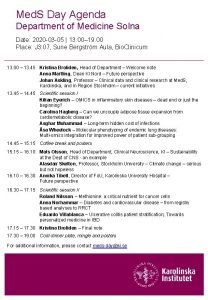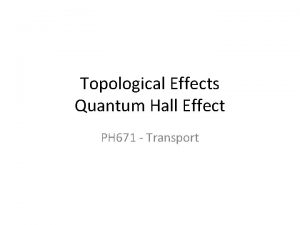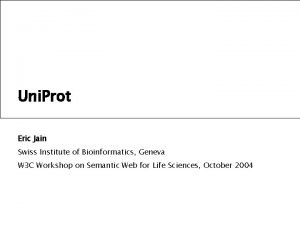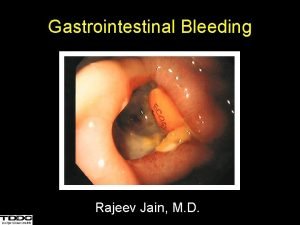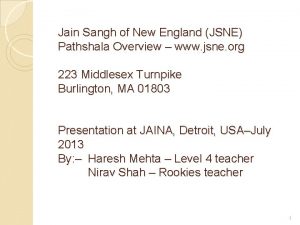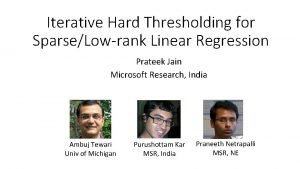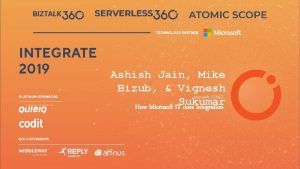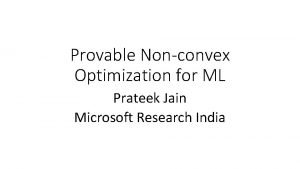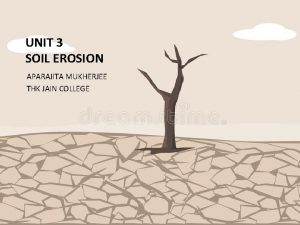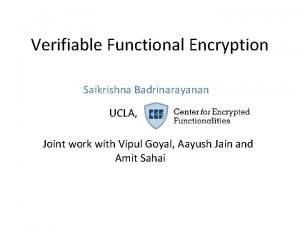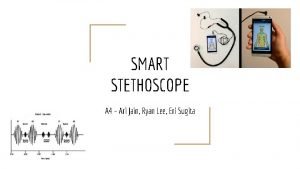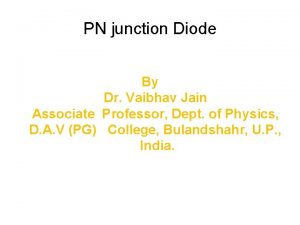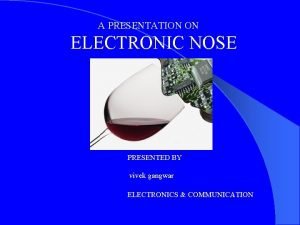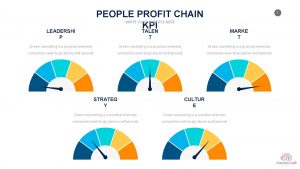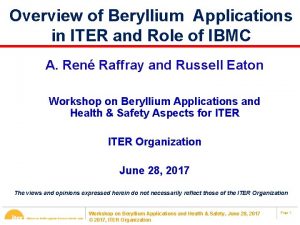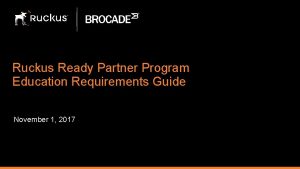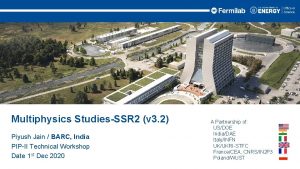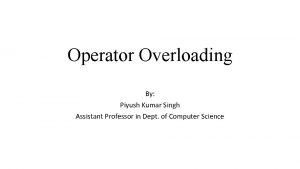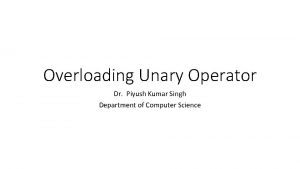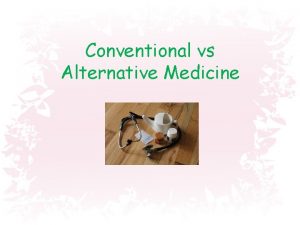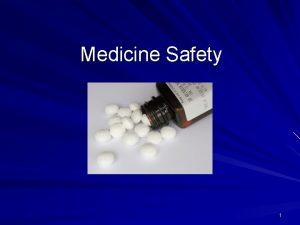Dr Piyush Jain Associate Professor Department of Medicine










































































- Slides: 74

Dr Piyush Jain Associate Professor, Department of Medicine, PGIMER, Dr RML Hospital ü Graduate and Post graduate from prestigious University College of Medical sciences (UCMS), Delhi üPost graduate program in Rheumatology from John Hopkins school of Medicine üAwarded Dr Madhu Saxena Award for Best Outgoing Post Graduate in Medicine , 2010 ü Awarded ICMR International travel grant for ESH 2013, Milan. ü Member, Board of Management, Delhi Diabetic Forum ü Rheumatology clinics at RML hospital. ü Various publications in national and international journals & textbooks. ü Reviewer for national journals.

Lupus Nepritis – What is new in 2016 Dr Piyush Jain Associate Professor, Department of Medicine, PGIMER, Dr RML Hospital

Contents �Introduction �Diagnosis of lupus nephritis �Classification �Management of LN �Recent trials

Systemic Lupus Erythematosus • • • Inflammatory multisystem disease 1. 5 million cases Women>Men- 9: 1 ratio (90% cases are women) African Americans>Whites Onset usually between ages 15 and 45 years, but can occur in childhood or later in life • Highly variable course and prognosis, ranges from mild to life threatening • Characterized by flares and remissions • Associated with characteristic autoantibodies

Lupus history • Lupus is the Latin word for wolf • 1 st used medically in the 10 th century • Described clinically in the 19 th century • Butterfly rash in 1845 • Arthritis in 1892 • Nephritis in 1895 by Osler • Serologic tests become available in the 20 th century • LE cell in 1948 • Lupus anticoagulant in 1952 • ANA in 1954 From Dubois

What are the symptoms of lupus? � Painful swollen joints � Unexplained fever � Extreme fatigue � Rashes • • Sensitivity to the sun Mouth Sores Hair loss Pale or purple fingers or toes from cold Swollen glands Headache and/or Depression Chest pain with deep breathing Low blood count

Other problems � Repeated Miscarriages � Disease in organs �Kidney �Heart �Lungs �Brain and nerves

Lupus presenting symptoms

How do we diagnose lupus? Skin criteria Systemic criteria 1. Malar rash 5. Arthritis 2. Discoid Rash 6. Serositis 3. Photosensitivity 7. Kidney 4. Oral Ulcers 8. Neurologic Lab criteria 9. Anti-nuclear antibody 10. Immunologic 11. Hematologic *4 criteria simultaneously or serially for diagnosis

LUPUS NEPHRITIS 35% of adults with SLE have clinical evidence of nephritis at the time of diagnosis. 50– 60% develop nephritis during the first 10 years of disease. Higher in men than in women.

Case definition �Persistent proteinuria 0. 5 gm per day �Or greater than 3+ by dipstick And/or �Cellular casts including red blood cells, granular, tubular, or mixed

Active Urinary Sediment: �>5 RBCs/hpf �>5 WBCs/hpf in the absence of infection �cellular casts limited to RBC or WBC casts

Renal Biopsy �All patients with clinical evidence of active LN, previously untreated, undergo renal biopsy (unless strongly contraindicated) so that glomerular disease can be classified by current ISN/RPS classification �Evaluated for activity and chronicity and for tubular and vascular changes


Investigations 1. Urine Protein creatinine ratio 2. 24 hrs urinary protein 3. Creatinine clearance 4. ds DNA 5. Complement level

Non Invasive Biomarkers

Non Invasive Biomarkers �Novel biomarkers must be judged against an activity measurement that is superior to the kidney biopsy. �More importantly, these putative biomarkers are now being tested to determine whether they predict the course of lupus nephritis, such as impending flare, or future outcome.

ALL SLE PATIENTS SHOULD BE ON HYDROXCHLOROQUINE (HCQ) Rationale: �Lower rates of Flare �Reduced renal damage �Less clotting events �Improvement in arthralgias/arthritis �Skin rash

LN patients with proteinuria >0. 5 gm per 24 hours should have blockade of the renin–angiotensin system, with ACE inhibitors or ARBs. Rationale: �Reduces proteinuria by 30%, and �Significantly delays doubling of serum creatinine �Delays progression to end-stage renal disease

�Control of hypertension, with a target of <130/80 mm Hg �Statin therapy be introduced in patients with low-density lipoprotein cholesterol >100 mg/dl

Principles of treatment �Class I and Class II- do not require immunosuppressive treatment. �Class III And Class IV aggressive therapy with glucocorticoids and immunosuppressive agents �Class V when combined with class III or IV should be treated in the same manner as class III or IV �Class VI requires preparation for renal replacement therapy rather than immunosuppression

Class I LN (minimal-mesangial LN) Treatment as dictated by the extrarenal clinical manifestations of lupus RATIONALE: �Class I LN has no clinical kidney manifestations. �Class I LN is not associated with long-term impairment of kidney function �Nephrotic syndrome due to concomitant podocytopathy would warrant treatment with corticosteroids.

Class II LN (mesangial-proliferative LN) �Treat patients with class II LN and proteinuria <1 g/d as dictated by the extrarenal clinical manifestations of lupus. �Class II LN with persitent proteinuria >1 g/d be treated with low dose corticosteroids with or without AZA. RATIONALE: There are no evidence-based data on the treatment of class II LN.

Class III LN (focal LN) and class IV LN (diffuse LN) �Initial therapy with corticosteroids , combined with either cyclophosphamide or MMF � if patients have worsening LN (rising SCr, worsening proteinuria) during the first 3 months of treatment, a change be made to an alternative recommended initial therapy, or a repeat kidney biopsy be performed to guide further treatment. �KDIGO suggest treatment change over after 3 months. �ACR- EULAR after 6 months.

Response Definition

Management Goals �Recognize serious lesions early so that aggressive treatment regimens can be initiated before irreversible changes have occurred �Attempt to induce remissions (complete or partial) with the safest, most effective regimen �Maintain remission (without relapses) for as long as possible while minimizing adverse drug- related events (especially steroid-related) �Avoid need for RRT; prolong life expectancy; improve quality of life

Mild FPGN Or severe DPGN Rheumatologist or Nephrologist CYC Patient received prior CYC With or without A/E Pediatric or adult

NIH trial �six pulses of intravenous cyclophosphamide (0. 5 to 1 g/m 2) on consecutive months, followed by every third month follow-up pulses with low dose corticosteroids. �Effective and prevented relapses better than a shorter regimen limited to six doses alone.

EURO LUPUS NEPRITIS TRIAL �A head-to-head comparison of low-dose to ‘conventional’ high-dose i. v. CYC for active LN. �Ninety patients were randomized to either high dose CYC (six monthly i. v. pulses of 0. 5– 1 g/m 2 followed by two quarterly pulses) or �low-dose CYC (fixed i. v. pulses of 500 mg given every 2 weeks for a total of six doses). �Following CYC, both groups received oral azathioprine (AZA) as maintenance therapy

EURO LUPUS NEPRITIS TRIAL At 41 months, there were no significant differences in the primary end point, �cumulative probability of treatment failure, between the high- and low-dose treatment arms (20 vs 16%, respectively). �There were also no differences in renal remissions (54 vs 71%, respectively) or � Renal flares (29 vs 27%, respectively). �The shorter regimen had less toxicity with fewer and less severe infections.




MYCOPHENOLATE MOFETIL (MMF) �Inhibitor of the crucial enzyme involved in the de novo synthesis of guanosine nucleotides. � As lymphocytes do not possess a salvage pathway for the generation of these nucleotides, MMF results in selective blockade of B- and T-cell proliferation. �Unlike CYC, MPA has little impact on other tissues with high proliferative activity. �This accounts for less adverse effects.

�Chan et al. randomized 42 patients with DPLN to 6 months of induction with MMF (2 g/day) or oral CYC (2. 5 mg/kg/day), both with concurrent oral prednisolone. �During the maintenance phase, those in the MMF arm continued the drug at a reduced dose (1 g/day) and those in the CYC arm switched to AZA (1. 5 mg/kg/day) for 6 months. �At 12 months, there were no differences in complete remissions (CR), partial remissions (PRs), or relapses.


� A larger U. S. induction trial, reported 5 years later in a more diverse population, examined � 140 patients with proliferative lupus nephritis or membranous lupus nephritis randomized to intravenous CYC monthly pulses versus oral MMF up to 3 g daily, each in conjunction with a fixed tapering dose of corticosteroids as induction therapy over 6 months. � Although the study was powered as a non inferiority trial, complete remissions and complete plus partial remissions at 6 months were significantly more common in the MMF arm (52%) than the cyclophosphamide arm (30%). � Again, the side effect profile was better in the MMF group, and at 3 years, there were no significant differences in numbers of patients with renal failure, Ginzler et al. NEJM 200 ESRD, or mortality.





ALMS Maintenance Trial �MMF was superior to azathioprine with respect to the primary end point, time to treatment failure. and with respect to time to renal flare and time to rescue therapy. �Observed rates of treatment failure were 16. 4% (19 of 116 patients) in the mycophenolate mofetil group and 32. 4% (36 of 111) in the azathioprine group. �rate of withdrawal due to adverse events was higher with AZA than MMF


LESS FLARES WITH MMF BUT NS

Maintenance Therapy MMF �Cardioprotective �AZA can cause some mutations in the genes – potentially carcinogenic. (dose and duration dependent) AZA �Safe during pregnancy �Cost effective

Rituximab in Lupus Nephritis

LUNAR Study Design Rituximab + MMF (n=72) Screening Prednisone taper Follow-up Period Placebo + MMF (n=72) Weeks 16 1 and 2 24 and 26 (Days 168 and 182) (Days 1 and 15) Week 52 = Study drug infusion. = Corticosteroids: • 1000 mg IV methlyprednisolone given at days 1 and then days 2, 3, or 4 • Oral prednisone initiated at 0. 75 mg/kg/day after IV steroids and then tapered to 10 mg/day by day 112 Week 78

Primary Endpoint: Renal Response at Week 52 60 s 54. 1 P=0. 55* n 30. 6 26. 4 15. 3 Pr Placebo (N=72) 43. 0 Rituximab (N=72) Colete Renal Response (CRR) Partial Renal Response (PRR) No Response (NR) * Wilcoxon Rank-sum test to compare the proportions of (CRR, PRR, NR) between rituximab and placebo Mean MMF dose: Placebo: 2. 4± 0. 62 g; Rituximab: 2. 7± 0. 41 g

Proportion of Subjects Achieving Response by Race ion 70. 0 60% 55. 0 47. 8 Prop 45. 0 50. 0 52. 6 Resp 40% Placebo 20% Rituximab 10% 9/20 14/20 Black (n=40 11/23 16/29 Hispanic (n=52) 13/26 10/19 Caucasian (n=45) LUNAR-Pre-Specified Analysis

Rituximab is not currently approved by the FDA for induction of Remission in Lupus Nephritis; with or without concurrent therapy with MMF or CYC


Fifty-four patients with active LN received three methylprednisolone pulses for 3 consecutive days followed by � oral prednisone and RTX 1 g at days 3 and 18 (17 patients) � or MMF 22. 5 g/day (17 patients) �or six CYC pulses (0. 5 g every fortnight) (20 patients). At 4 months MMF, AZA or ciclosporin were associated to prednisone as a consolidation/maintenance therapy in all groups. .

Results �At 3 months, proteinuria was reduced by 50% in 58. 8% of patients on RTX, in 64. 7% on MMF and in 63. 1% on CYC. �At 12 months, complete remission was present in 70. 6% of patients on RTX, in 52. 9% on MMF, and in 65% on CYC. �Partial remission was reached in 29. 4% on RTX, 41. 2% on MMF, and 25% on CYC

BELIMUMAB �Inhibits B-cell activating factor (BAFF) �FDA approved agent for treating non renal SLE �Being studied as a potential therapy for Lupus Nephritis. �The Study of Belimumab in Subjects With Systemic Lupus Erythematosus (BLISS)-52 and BLISS-76 trials focused on stable, non severe LN and excluded patients with acute/severe LN.

BELIMUMAB �Although patients receiving belimumab had decreased proteinuria compared with placebo, this difference did not meet clinical significance (median decrease: 48. 3/39. 1 vs. 75. 2%, NS). �Similarly, there was no significant difference in renal flare (2. 1/1. 1 vs. 3%, NS) and renal remission rates (65. 7/70. 5 vs. 58. 7%, NS) as compared with placebo.


BELIMUMAB �There is a current phase III, double-blinded RCT investigating the effects/safety of standard of care and belimumab 10 mg/kg vs. placebo in patients with LN to address this issue.

ABATACEPT �Abatacept, a selective T-cell co-stimulation modulator. �T-cell activation, a crucial step in the pathogenesis of glomerulonephritis, requires both �binding of the T-cell receptor to the antigen– MHC complex on the antigen presenting cell and �a co stimulatory signal provided by the binding of the CD 28 protein (on the T cell) to the B 7 protein (on the antigen presenting cell). �Abatacept binds to the B 7 protein, preventing this costimulatory signal and, consequently, activation of T cells.


�Abatacept and Cyclophosphamide Combination Therapy for Lupus Nephritis �patients with class III/IV ± V LN �intravenous abatacept vs. placebo �Both groups also received glucocorticoids and 500 mg intravenous CYC every 2 weeks for six doses, followed by AZA maintenance. �At 24 weeks, there was no difference in CR or overall response rates in the abatacept vs. placebo groups (33 vs. 31% CR, 59 vs. 59% overall response). �Adverse events were comparable in both groups.

�Ongoing phase III, double-blind multicenter RCT investigating abatacept vs. placebo with background MMF and glucocorticoids over a 104 week period.

ATACICEPT �Atacicept is a soluble, fully human, recombinant fusion protein, which inhibits both BAFF and a proliferation-inducing ligand (APRIL). �A double-blind RCT of subcutaneous atacicept (four patients) or placebo (two patients) and MMF and prednisone for active class III/IV LN was discontinued early because of severe rapid declines in serum Ig. G and serious infections in three out of four treated patients.

Ocrelizumab �recombinant humanized antibody, sharing targeting of CD 20 with rituximab. �Ocreluzimab (OCR)+ MMF or CYC (Eurolupus protocol) vs Placebo + MMF or CYC underwent a Phase III pivotal trial in LN but the study was stopped prematurely due to excess infection rates in the active drug treated groups. �At the time of discontinuation no difference in efficacy (ITT) between OCR + MMF or CYC and Placebo + MMF or CYC groups.

Anti-TWEAK �The long-term extension trial of BIIB 023, a humanized monoclonal antibody against TNFrelated weak induced of apoptosis (TWEAK), in class III/IV±V disease was also recently terminated because of inefficacy.

BLISIBIMOD �Blisibimod is a BAFF antagonist (B cell Activating factor) �binds to both soluble and membrane-bound BAFF and inhibits the interaction of BAFF with BAFF receptor, transmembrane activator and Calcium modulating ligand interactor (TACI), and B-cell maturation antigen.

�A recent double-blind phase Ia/Ib RCT of 56/64 patients with mild/inactive lupus were randomized to receive either blisibimod at various doses vs. placebo. �The trial found a significant decrease in patient serum B-cell counts with the study drug without an increase in adverse events. �Although this trial excluded patients with active LN, there is a pending phase III, double-blind RCT to evaluate the efficacy and safety of blisibimod in patients with lupus and stable LN.

Mizoribine (MIZ) �Mizoribine (MIZ) is another potential novel treatment for LN. �It is thought to inhibit inosine monophosphate dehydrogenase – the same target as MMF.

Mizoribine (MIZ) �Feng et al. randomized 90 Chinese patients with active class III/IV/V LN to receive MIZ every other day vs. MMF vs. intravenous CYC 500 mg every 2 weeks and glucocorticoids over a 24 -week period. �All three groups showed an improvement in renal responses at 12 weeks but the CYC group had more early responders compared with MIZ (96. 7 vs. 73. 3%, P=0. 02). �At 24 weeks, CR and overall response rates were similar between all groups (CR – 22. 7 MIZ, 24 MMF, and 25% CYC, overall response – 68. 2, 72, and 75%).

Anifrolumab �IFN 1, including IFNa, have been implicated in the pathogenesis of SLE. �Anifrolumab, a human monoclonal antibody against the INFa receptor 1 , is currently being studied as a potential new therapy for lupus.

LAQUINIMOD (LAQ) �another promising novel therapy for LN. �Mode of action is not fully known but it is thought to behave as an oral immunomodulatory agent by down regulating selected cytokines, including IL-6, IL-12, IL-17, IL 23, and TNFa, whereas increasing IL-10. �In a phase IIa double-blind RCT of 46 LN patients comparing LAQ 0. 5 or 1 mg daily vs. placebo and MMF and glucocorticoids , the investigators found that renal responses were higher in the LAQ 1 mg compared with the 0. 5 mg and placebo groups (62. 5 vs. 40 vs. 33. 3%) at 24 weeks.


Class V Management

CONCLUSIONS �Diagnose early and treat aggressively in case of proliferative lupus nephritis. �Induction therapy with MMF or CYC. �Maintenance with MMF or AZA. �In severe refractory cases RTX may be used. �Prevent relapses and flares. �Follow the patients closely for adverse reactions to drugs. �New drugs are in pipeline and long term trials shall establish their safety and efficacy.

THANK YOU
 Dr piyush jain rml hospital
Dr piyush jain rml hospital Promotion from assistant to associate professor
Promotion from assistant to associate professor Piyush gupta mit
Piyush gupta mit Department of medicine solna
Department of medicine solna Department of medicine mcgill
Department of medicine mcgill Seamless twitter
Seamless twitter Quantum effect
Quantum effect Dr salil jain
Dr salil jain Pravin varaiya
Pravin varaiya Cherry hill jain sangh
Cherry hill jain sangh Pankaj jain iitk
Pankaj jain iitk Pramod jain lunawat
Pramod jain lunawat Jain
Jain Jainism beliefs
Jainism beliefs Denitrogenation atelectasis
Denitrogenation atelectasis Preet jain
Preet jain Jain way of life
Jain way of life Jain bcn
Jain bcn Eric jain
Eric jain Dr tulika jain
Dr tulika jain Vimal vasahi temple plan
Vimal vasahi temple plan Jain center of northern california
Jain center of northern california Melena management
Melena management Jain universe
Jain universe Jsne
Jsne Jain portal
Jain portal Ambuj tewari
Ambuj tewari Csr full form
Csr full form Jain way of life
Jain way of life Jain center of greater boston
Jain center of greater boston Ashish jain microsoft
Ashish jain microsoft Vaibhav.14v
Vaibhav.14v Raina jain dartmouth
Raina jain dartmouth Reti di calcolatori polito
Reti di calcolatori polito Prateek jain
Prateek jain Vidya jain case
Vidya jain case Jain
Jain Tulika jain md
Tulika jain md Jain geography universe
Jain geography universe Jain geography universe
Jain geography universe Aparajita jain
Aparajita jain Anu jain
Anu jain 14 rajlok in jainism
14 rajlok in jainism Saikrishna badrinarayanan
Saikrishna badrinarayanan Earpiece
Earpiece Eakta jain
Eakta jain Jain society of toronto
Jain society of toronto Vaibhav jain
Vaibhav jain Jain society of central florida
Jain society of central florida Aagam jain nlsiu
Aagam jain nlsiu Vivek jain
Vivek jain Nus bza curriculum
Nus bza curriculum Mitthu jain
Mitthu jain Mcl uniform
Mcl uniform Child development teacher permit
Child development teacher permit Hea associate fellowship
Hea associate fellowship Is an active process of discovery
Is an active process of discovery Rcog associate
Rcog associate Bcs professional membership
Bcs professional membership Mhp associate partner gehalt
Mhp associate partner gehalt Cincinnati state associate degrees
Cincinnati state associate degrees Associate degree startdag
Associate degree startdag Iter project associate
Iter project associate Associate's degree in the netherlands
Associate's degree in the netherlands Certified system engineering professional
Certified system engineering professional Experience assessment
Experience assessment Associate consultant in capgemini
Associate consultant in capgemini برنامهxx
برنامهxx Kosten tio hbo
Kosten tio hbo Tecniche associate al pensiero computazionale
Tecniche associate al pensiero computazionale Ruckus certification training
Ruckus certification training Imeche associate membership
Imeche associate membership Michelin aad program
Michelin aad program Laser alignment
Laser alignment Direct mapped cache
Direct mapped cache



